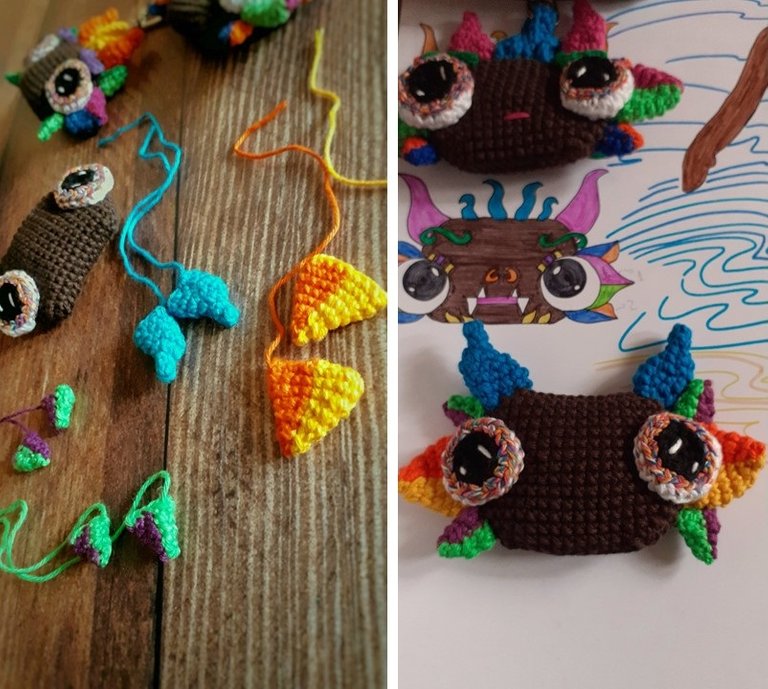
¡Hola, espero la estés pasando muy bien!
Hi, I hope you are having a great time!
Estoy muy feliz porque terminé de diseñar a estos coloridos diablitos (jaja). Por cierto, estaba planeando tejer su amigurumi ¿qué les parece?.
Este personaje tiene un significado importante para mí. Mas allá de representar mi cultura, crecí escuchando músicas de Sayas, Tuntunas y Caporales...(incluido La Diablada y Morenada)..quizá de allí tuve una inclinación hacia las danzas típicas.
I'm very happy because I finished designing these colourful little devils (haha). By the way, I was planning to knit their amigurumi, what do you think?
This character has an important meaning for me. Beyond representing my culture, I grew up listening to the music of Sayas, Tuntunas and Caporales...(including La Diablada and Morenada)...maybe from there I had an inclination towards the typical dances.
Origen de La Diablada / Origin of La Diablada

Este tema es controversial. Recuerdo de niña escuchar también a Los Kjarkas (Agrupación Boliviana) quienes en sus canciones mencionaban mucho a una tal "negrita" y yo me preguntaba ¿en Puno hay negritas?.
Los cierto es que el origen de esta danza aún sigue perdido en el pasado. Se sabe que se impulsó desde las violentas peleas que hubo entre los "Vicuñas y Vascongados". Si bien el libro del cual me estoy basando no habla de esto, menciona varios pueblos de Puno y que los habitantes del Barrio Mañazo lo presentan en la "Fiesta de la Candelaria" junto a la Morenada.
Puno, the folkloric capital of Peru has more than 300 varieties of typical dances, one of them being La Diablada.
This is a controversial issue. I remember as a child listening to Los Kjarkas (Bolivian group) who in their songs often mentioned a certain "negrita" and I used to ask myself, "Are there negritas in Puno?.
The truth is that the origin of this dance is still lost in the past. It is known that it was promoted from the violent fights that took place between the "Vicuñas and Vascongados". Although the book on which I am basing myself does not talk about this, it mentions several villages in Puno and that the inhabitants of the Barrio Mañazo present it in the "Fiesta de la Candelaria" together with the Morenada.
La máscara / The mask

If it is a question of finding the cultural origins, that is to say "the reason for being", I try to find versions where it is not influenced by the Catholic religion, because it is known that these altered the history. In this case I defend the theory that the Diablada mask was inspired by the Mochica god "Ai apaec", whom the Moche feared because they did not want to be torn alive. With time, they added more adornments (ornaments), big horns, colours... similar to the Chinese Dragons.
Este diseño / This design

With all this information it was time to analyse and translate it into an amigurumi, for this I selected the characteristic details of the character and added variants of colour combinations to make it look like a party.

¡Y eso es todo!
¡…Hasta la próxima!
See you next time!

►Si quieres saber un poco más, nos vemos en:
Creary



